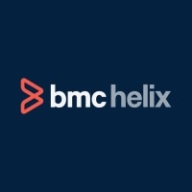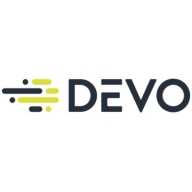

BMC Helix Continuous Optimization and Devo compete in IT operations and monitoring. BMC Helix has a strong edge due to its cost-effectiveness and comprehensive support while Devo excels in real-time data analysis features.
Features: BMC Helix Continuous Optimization provides predictive analytics, resource management, and enhances operational visibility. Devo offers robust data ingestion, high-speed analysis, and is ideal for real-time large data set monitoring.
Ease of Deployment and Customer Service: BMC Helix Continuous Optimization offers flexible deployment options and integrated support for smooth implementation. Devo focuses on straightforward cloud deployment with a self-service model and responsive technical support.
Pricing and ROI: BMC Helix Continuous Optimization is cost-effective with resource optimization tools providing clear ROI, appealing to cost-conscious organizations. Devo has higher initial setup costs but offers significant ROI through its advanced data analysis capabilities for immediate insights.
| Product | Market Share (%) |
|---|---|
| Devo | 4.8% |
| BMC Helix Continuous Optimization | 0.6% |
| Other | 94.6% |

| Company Size | Count |
|---|---|
| Small Business | 7 |
| Midsize Enterprise | 4 |
| Large Enterprise | 11 |
BMC Helix Continuous Optimization is a comprehensive performance and capacity management solution designed to help enterprises optimize IT resources, enhancing operational efficiency while managing costs effectively.
It provides predictive analytics and modeling capabilities, allowing businesses to meet evolving demands seamlessly. By proactively identifying resource constraints and predicting future trends, BMC Helix Continuous Optimization assists organizations in aligning IT resources with business objectives. This strategic approach ensures optimized performance, resource allocation, and cost management with enhanced insights.
What are the key features of BMC Helix Continuous Optimization?
What benefits can be expected from BMC Helix Continuous Optimization?
BMC Helix Continuous Optimization is leveraged by industries like financial services, healthcare, and telecommunications to ensure resource efficiency. These sectors benefit from predictive modeling and capacity planning capabilities, enabling them to adapt to fast-changing conditions while maintaining optimal performance.
Devo is the only cloud-native logging and security analytics platform that releases the full potential of all your data to empower bold, confident action when it matters most. Only the Devo platform delivers the powerful combination of real-time visibility, high-performance analytics, scalability, multitenancy, and low TCO crucial for monitoring and securing business operations as enterprises accelerate their shift to the cloud.
We monitor all IT Operations Analytics reviews to prevent fraudulent reviews and keep review quality high. We do not post reviews by company employees or direct competitors. We validate each review for authenticity via cross-reference with LinkedIn, and personal follow-up with the reviewer when necessary.